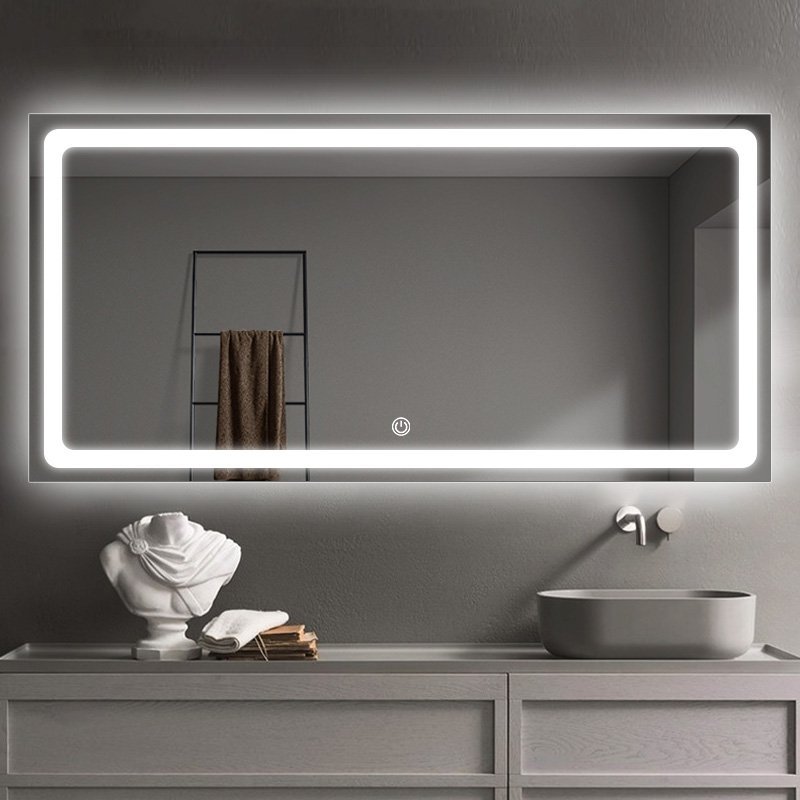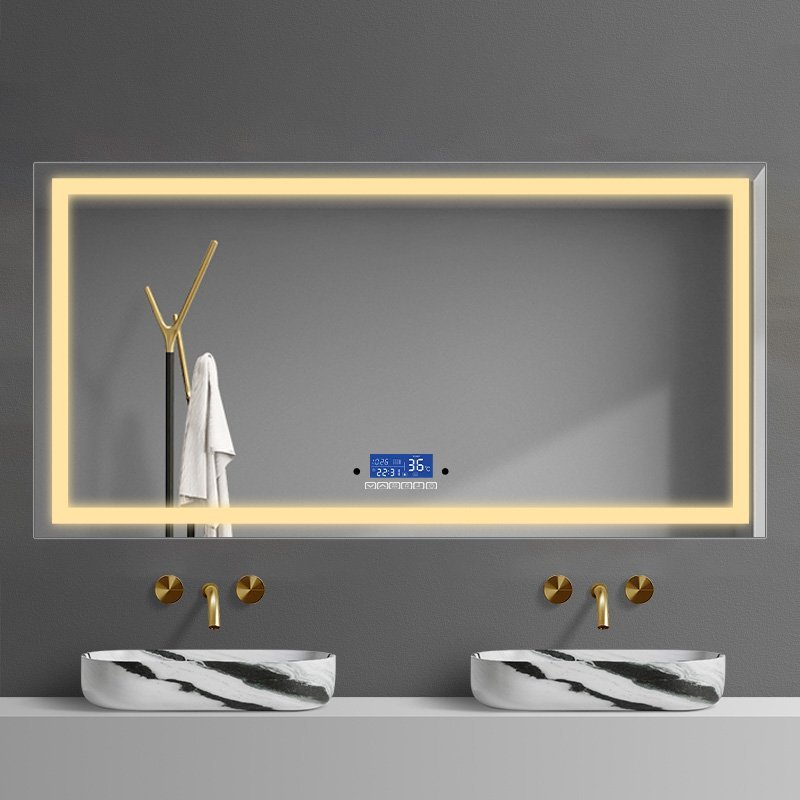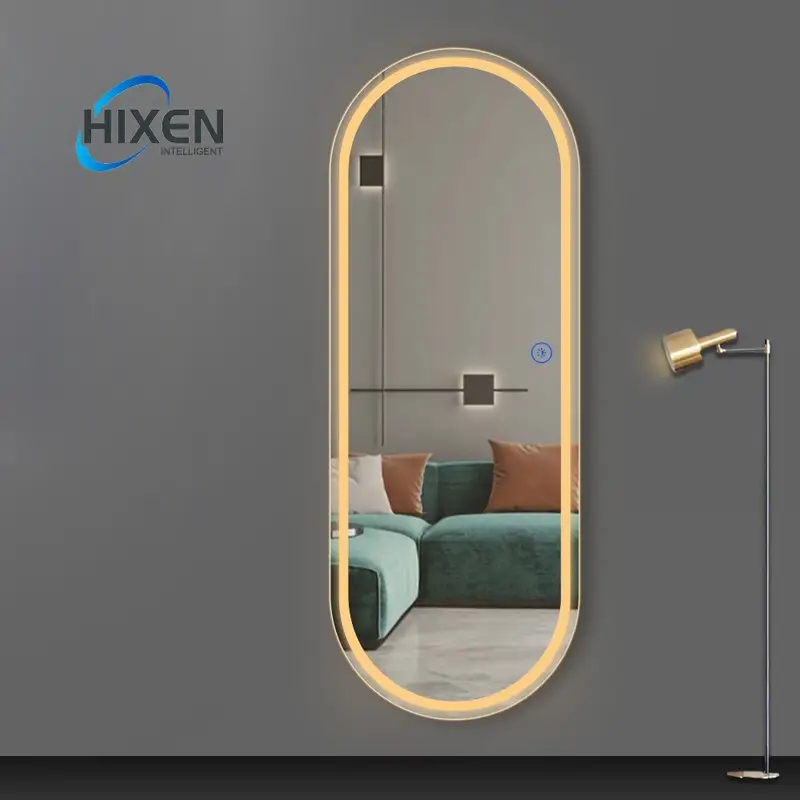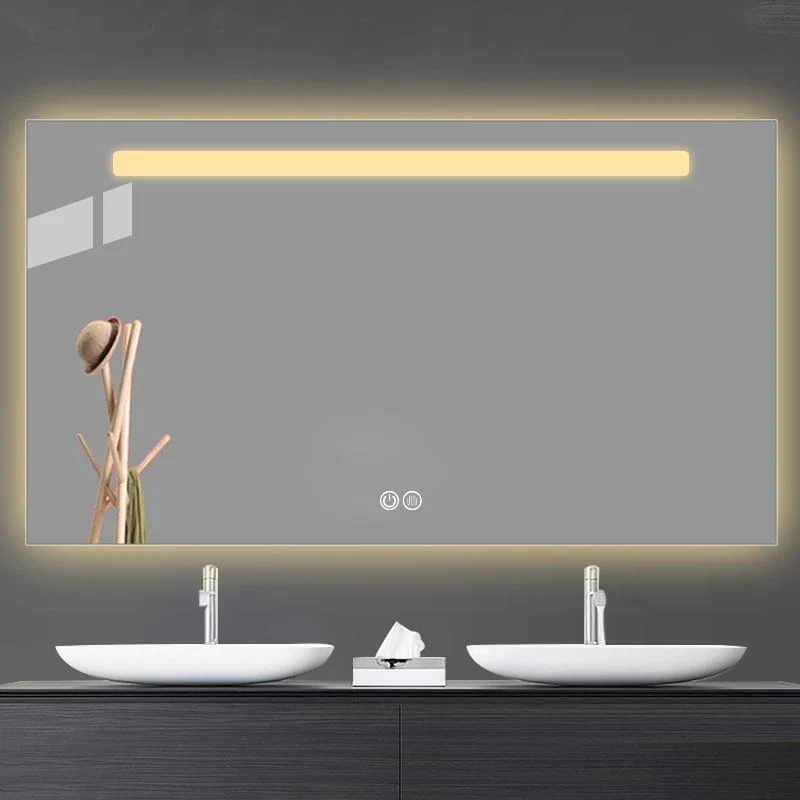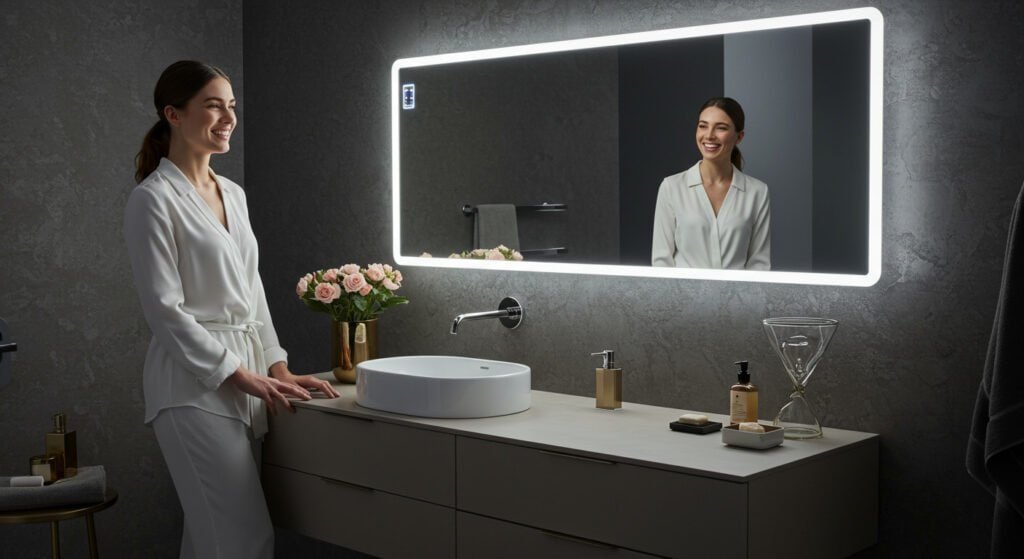|
گرفتن شما تثلیث صوتی بازیکن آماده ...
|
LEDvanity mirrors elevate modern bathrooms but often face technical glitches. A flickeringmirror with inbuilt light یاtouch sensor mirror not working can frustrate users and damage your brand reputation. Fortunately, most issues stem from preventable design flaws – here’s how to address them systematically.
From mirror water damage به visor mirror light not working, common LED bathroom mirror problems include fogging, dimming lights, sensor failures, and Bluetooth connectivity issues. Solutions range from selecting IP44-certified mirrors for bathroom to using Samsung-grade LEDs and voltage-stable drivers. We’ll break down actionable fixes backed by engineering insights.
Let’s dissect each problem with technical precision:
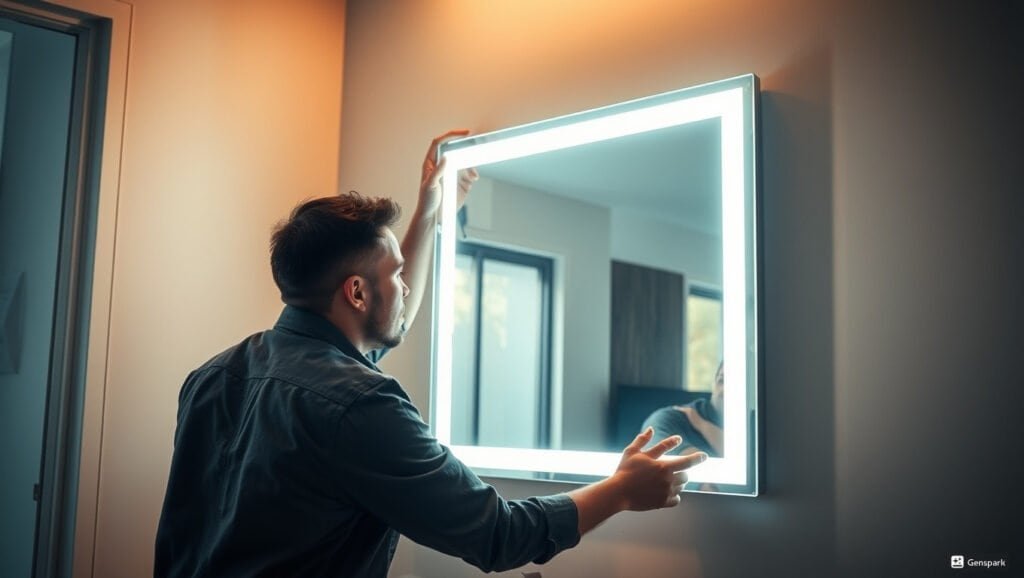
1. Why Is My LED Mirror Not Turning On?
بوها mirror vanity unit failing to power up often stems from electrical incompatibilities. Start by checking these:
- Voltage mismatches: North American led mirror with Bluetooth models require 110V, while European units use 220V. Verify your adapter’s label – a 24V adapter won’t work for 12V systems.
- Loose connections: Inspect the DC jack on light weight mirrors, where frequent adjustments can loosen solder joints.
- Tripped safety features: Overheating triggers automatic shutdowns in quality mirrors for bathroom installations. Unplug for 30 minutes before retesting.
Pro Tip: For full-length wall mirror with lights, use adapters rated 20% above the rated wattage to prevent overloads.
2. How to Fix Flickering LED Bathroom Mirrors
Flickering in bathrooms with LED mirrors isn’t just annoying – it causes eye strain. Address it systematically:
- Driver issues: Cheap PWM drivers cause visible strobe effects. Replace them with constant-current drivers (look for “CC” certification).
- Voltage fluctuations: Pair led for vanity mirror systems with surge protectors, especially in older homes with unstable grids.
- Dimmer incompatibility: Not all mirror bathroom LED units work with standard dimmers. Confirm compatibility with trailing-edge (ELV) dimmers.
Case Study: بوها gray bathroom mirror flickered only at 50% brightness – replacing its 700mA driver with a 1050mA model resolved the issue.
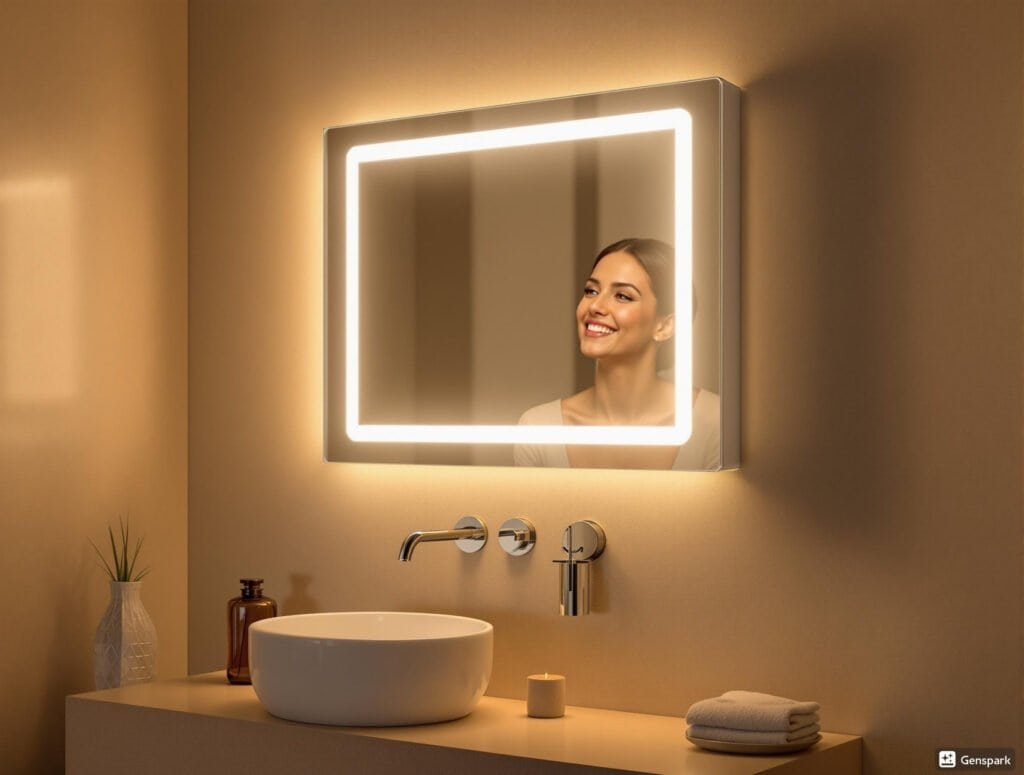
3. Why Is My LED Mirror Dimmer Than Usual?
When your lit mirror loses brightness:
- LED degradation: Cheap chips lose 15-20% luminosity annually. Premium brands like Lumileds degrade <3%/year.
- Dust accumulation: Clean sensor mirror round edges monthly using microfiber cloths – accumulated grime blocks 30% of light output.
- Power sag: Test voltage at the adapter’s output terminals. بوها 24 x 32 آینه needing 12V should measure 11.8-12.2V under load.
Critical Check: For rgb mirror models, ensure all color channels are active – a dead green channel makes whites appear pink.
4. How to Resolve LED Mirror Fogging Issues
Defogging failures plague 40% of mirrors with lights within 2 سال. Combat this with:
- Heating grid upgrades: Standard 25W/m² pads take 8+ minutes to clear fog. Upgrade to 50W/m² copper-alloy grids (clears in 90 seconds).
- Sensor calibration: Use a hygrometer to verify your mirror bathroom LED’s humidity sensor. Recalibrate if readings deviate >5%.
- Ventilation: Install great bathroom mirrors at least 12″ from showerheads to reduce moisture exposure.
Warning: Never seal sensor mirror trio max units completely – condensation needs escape routes.
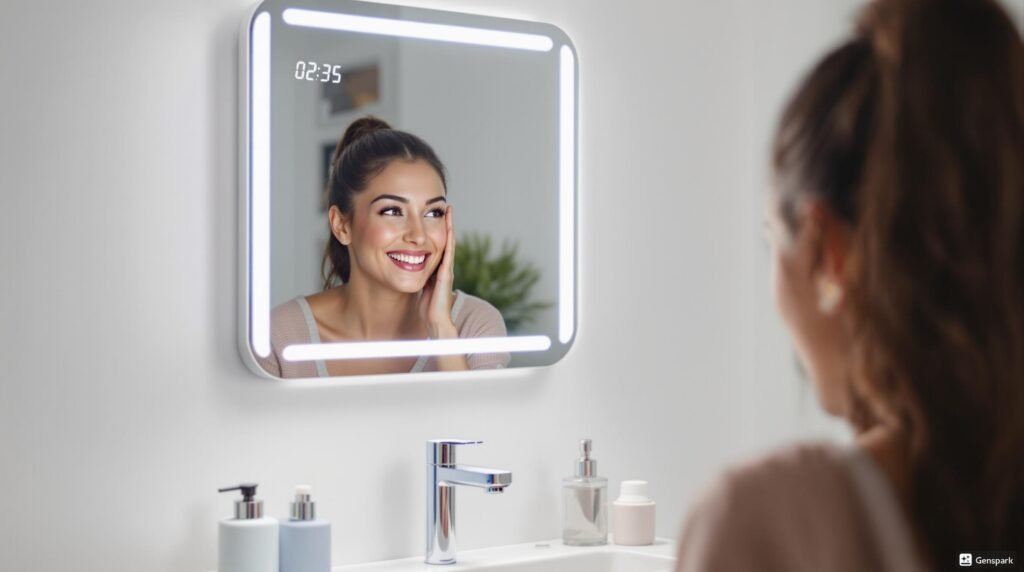
5. What to Do if the Touch Sensor Stops Working
When your sensor mirror fold becomes unresponsive:
- Power cycle: Disconnect for 60 seconds – resets capacitive sensors in most vanity mirror with lights Amazon models.
- Clean contacts: استفاده کردن 90% isopropyl alcohol on sensor mirror round edges where fingerprints disrupt conductivity.
- EMI check: Move cordless phones or routers >3ft away – 2.4GHz interference affects touch sensitivity.
Advanced Fix: For simplehuman mirror reset needs, press and hold the brightness button for 10 seconds.
6. Why Is My LED Mirror Producing Noise?
Buzzing mirrors for bathroom units indicate:
- Transformer resonance: Replace unshielded transformers with potted, epoxy-filled models.
- PWM frequency: Drivers operating below 1kHz create audible whine. Upgrade to >20kHz drivers.
- Loose components: Secure all screws in light weight mirrors – vibration amplifies minor rattles.
Decibel Test: Quality led light in bathroom mirror systems operate below 25dB – use a smartphone app to measure.
7. How to Prevent Water Damage on LED Mirrors
Protect mirror water damage with:
- IP ratings: IP44 (splash-proof) for standard installs, IP65 for shower-adjacent bathroom mirrors lights.
- Edge sealing: Apply clear silicone to 24 x 32 آینه perimeters annually.
- Drainage design: Choose models with downward-angled backs to channel moisture away from circuits.
Red Flag: Bubbling silvering at a gray bathroom mirror’s base signals water infiltration – reseal immediately.
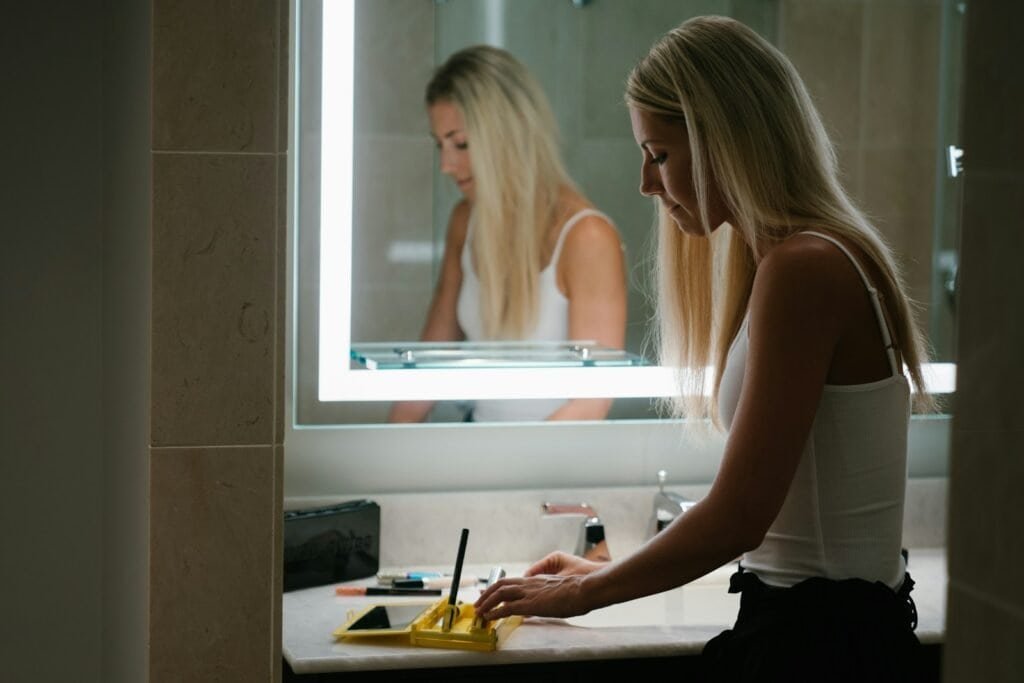
8. Are LED Bathroom Mirrors Durable?
A well-built mirror with inbuilt light lasts 8-12 years with:
- Frame material: Anodized aluminum outperforms plastic in humidity.
- Glass thickness: 6mm tempered glass survives 200°F thermal shocks (common in bathrooms with led mirrors).
- Joint construction: Welded corners prevent sensor mirror trio max units from warping.
Stress Test: Quality mirrors for bathroom withstand 150lb lateral force without deflection.
9. Tips for Cleaning Your LED Bathroom Mirror
Preserve your آینه غرور را روشن کنید with:
- Daily care: Wipe sensor mirror round surfaces dry after showers to prevent hard water stains.
- Weekly cleaning: Mix 1:3 white vinegar/distilled water for mirrors with lights – avoids damaging anti-fog coatings.
- Deep clean: For rgb mirror smudges, use Zeiss lens wipes on powered-off units.
Never Use: Abrasive pads on sensor mirror fold hinges or ammonia-based cleaners on silvering.
10. Caring for Your LED Mirror: Maintenance Tips
Extend the life of your led mirror with Bluetooth with:
- Monthly checks: Inspect gaskets on full-length wall mirror with lights for cracks.
- Biannual updates: Update firmware via USB for simplehuman mirror reset compatibility.
- Yearly professional service: Have certified technicians inspect high-voltage components in mirror vanity units.
Proactive Measure: Keep spare bulbs for vanity mirrors – matching color temperatures prevents uneven lighting later.

Final Thoughts
From silencing a buzzing mirror bathroom LED to restoring a touch sensor mirror not working, most issues have logical fixes. Prioritize models with modular components – replacing a single faulty sensor beats scrapping entire mirrors for bathroom. By understanding these solutions, you’ll transform problematic led light in bathroom mirror installations into reliable, long-lasting assets.
- برای یادگیری نحوه انتخاب آینه حمام مناسب اینجا را کلیک کنید.
- برای یادگیری نحوه نصب آینه اینجا را انتخاب کنید.
- برای یادگیری نحوه انتخاب آینه اندازه مناسب اینجا را کلیک کنید.
- برای یادگیری نحوه ساخت آینه ها اینجا کلیک کنید.
- اینجا را کلیک کنید و یاد خواهید گرفت که چرا در آینه ها بهتر به نظر می رسیم.
- اینجا را کلیک کنید در مورد بالا خواهید آموخت 10 تولید کنندگان آینه LED برای 2024.
- اینجا را کلیک کنید تا دریابید که چرا نور آینه غرور من روشن نمی شود?
- دریابید که آینه حمام چقدر باید قد داشته باشد?اینجا را کلیک کنید
- اگر نمی دانید چگونه آینه خود را تمیز کنید اینجا را کلیک کنید
- برای اطلاع از نحوه رفع آینه سنسور لمسی که کار نمی کند اینجا را کلیک کنید






